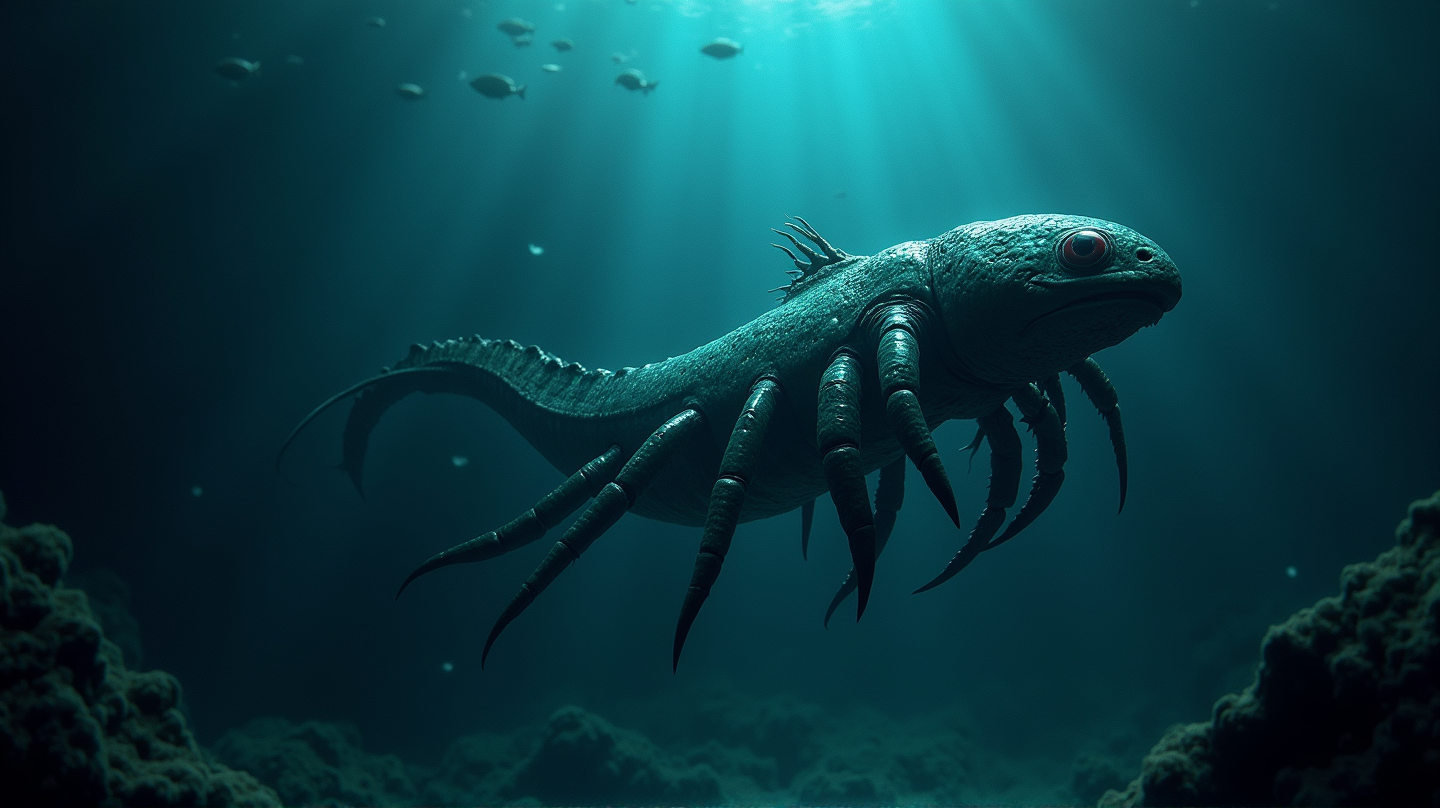Unveiling the Ocean's Dark Secrets: A New Predator Emerges
In the depths of the Atacama Trench, a tiny yet formidable predator, Dulcibella camanchaca, challenges our understanding of deep-sea life.

Dive into the mysteries that the Atacama Trench holds, where the newly discovered Dulcibella camanchaca, a tiny yet formidable predator, proves how much we have yet to learn about Earth’s uncharted corners. Stretching alongside Chile and Peru, this underwater abyss becomes the site of a groundbreaking find, offering a glimpse into the profound adaptability present in the Hadal realm.
A Glimpse into the Abyss
The Atacama Trench, swirling with intrigue and danger, has revealed a new predator dwelling 8,000 meters beneath the waves. Scientists aboard the Abate Molina research vessel unveiled this discovery: a minuscule yet fierce crustacean named Dulcibella camanchaca. Its ghostly visage strikes a remarkable figure in an environment alien to human eyes.
Genetic explorations have shown that this predator is unique, belonging to a genus previously unknown to science. Such a vibrant discovery challenges the notion of our planet’s known biodiversity and unveils the secrets lurking beneath oceans’ surfaces.
The Trenches: A Sanctuary for Life
The incredible pressure and perpetual darkness of the Atacama Trench create an environment where only the most adept organisms survive. Here, Dulcibella camanchaca, with its white carapace and lethal predatory methods, thrives, capturing the imagination of researchers. Its presence attests to the complex, hidden ecosystems within Earth’s most extreme environments.
Beyond its role in the food web, this creature sparks curiosity about the survival mechanisms deployed in such formidable conditions. According to The Daily Galaxy, these findings compel a reevaluation of where life can exist.
Surviving the Unthinkable
Under the crushing pressure of 800 atmospheres, where sunlight dares not reach, lies a vibrant community, reflecting resilience and adaptation. How does Dulcibella camanchaca crush the odds? Specialized appendages for hunting and unparalleled endurance mark its tale of survival.
Johanna Weston, lead author of the study, emphasizes that these new species reflect the trench as a cradle of evolution. Here, evolution carves pathways for life even in the deeps’ dark recesses.
What’s Beyond the Horizon?
As this discovery illuminates the Atacama Trench’s biological bounty, it paves pathways for myriad more revelations. Vast and unexplored oceanic regions beckon scientists and suggest that the surprises beneath could reshape our understanding of life’s boundaries.
The implications even extend beyond Earthly seas. Speculative analogies draw parallels to Europa, Jupiter’s icy moon. If life thrives unseen here, could it persist in similarly harsh extraterrestrial environments? As stated in The Daily Galaxy, such lines of inquiry enrich both marine and space exploration narratives.
Join us as we journey both below and beyond Earth’s oceans, supported by relentless curiosity and driven by nature’s unfathomable secrets. What will we discover next in the shadowy expanses waiting to be explored?

